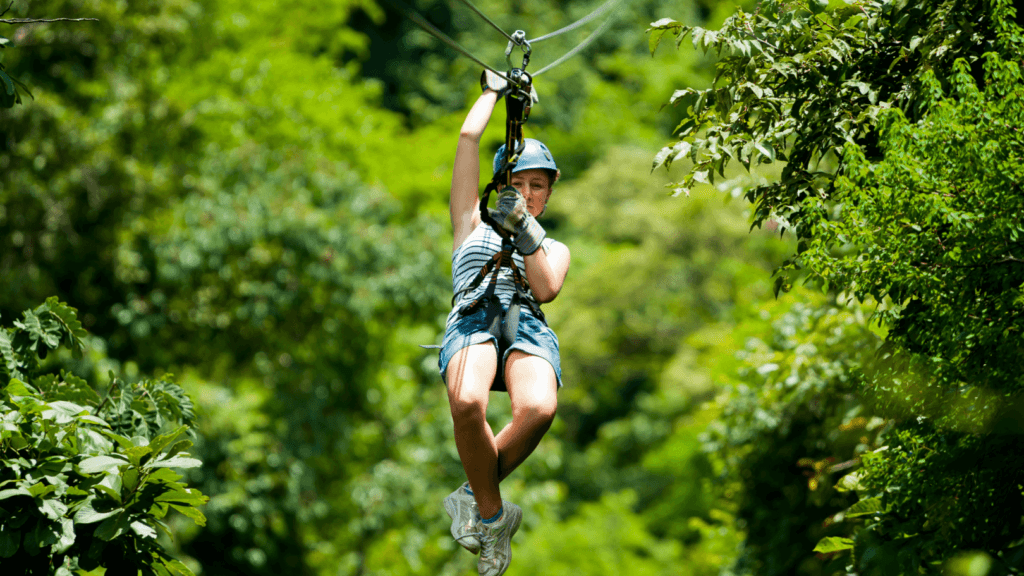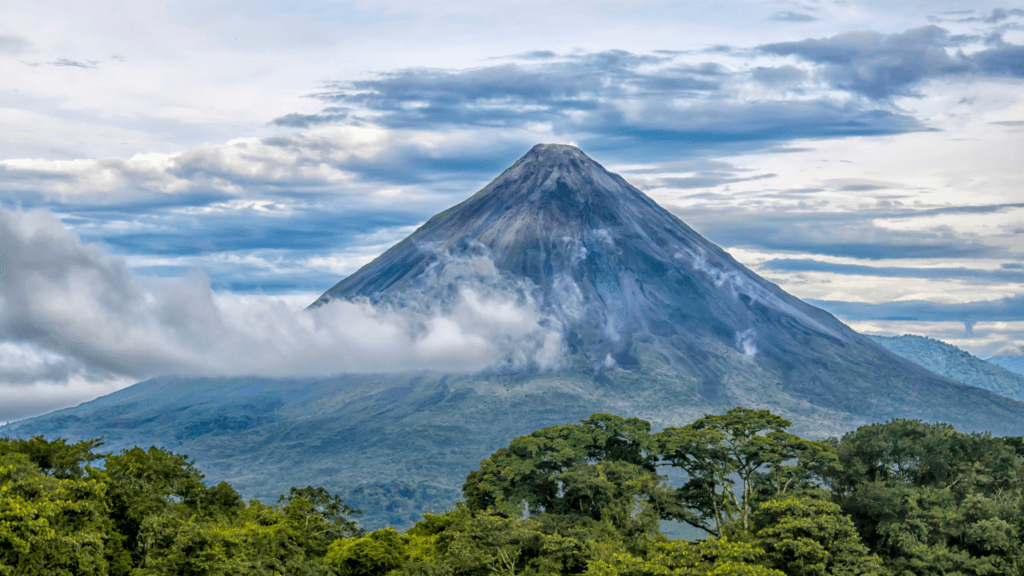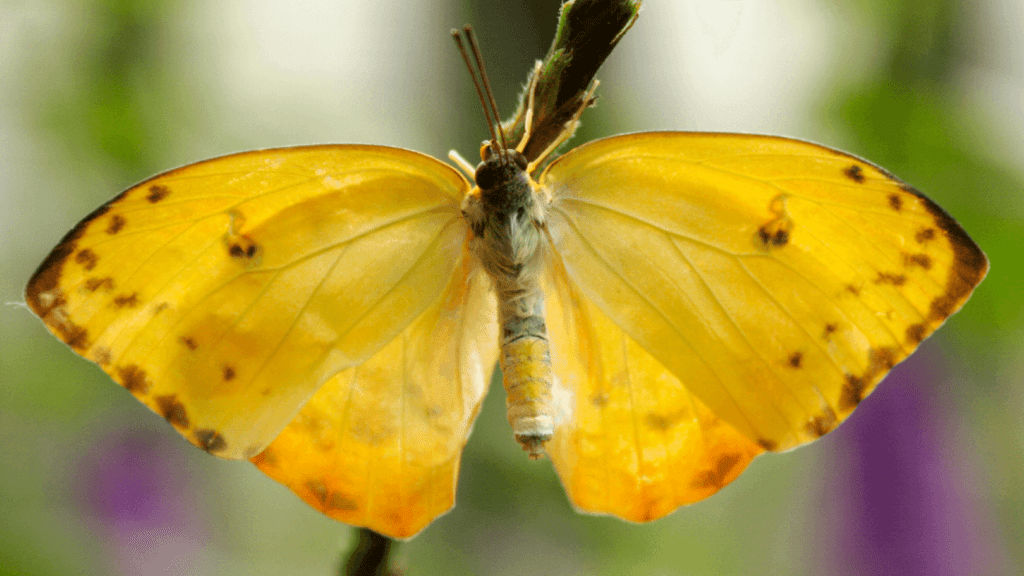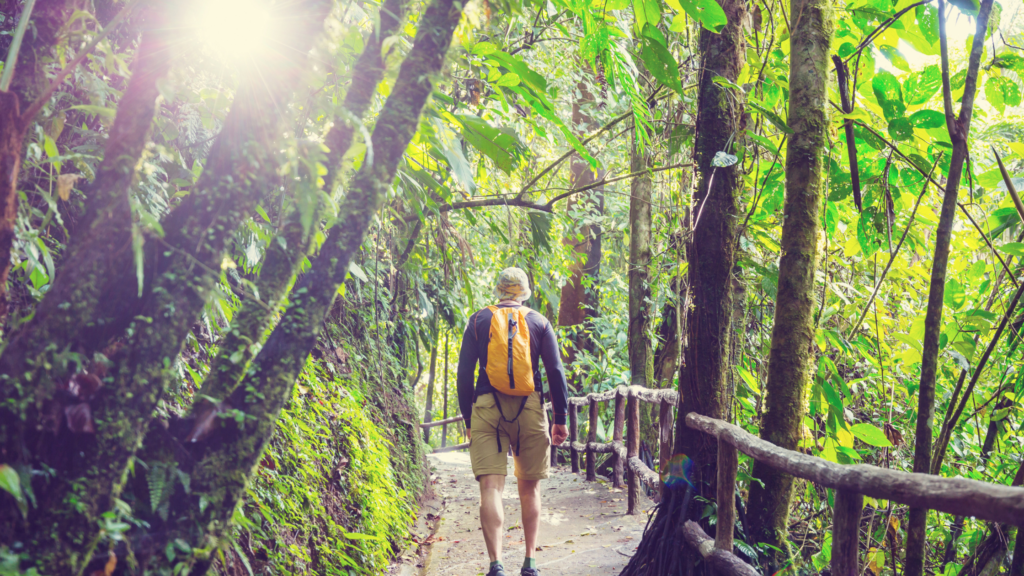Plan A Sustainable High School Science Trip to Costa Rica
I’ve just returned from an incredible Costa Rica trip. Having never been to this little slice of Central America, I had no expectations other than to enjoy some uninterrupted family time in a beautiful spot.

Wow! Not only did our visit exceed my rather humble expectations, it awakened the dormant educator in me. The lush tropical forests, pristine beaches, towering volcanoes, diverse climates, and impressive animal sanctuaries made my inner science teacher drool just a little.
It’s also a leader in sustainability. It strives to be one of the first countries in the world to have net zero emissions by 2050! If you’ve ever considered traveling internationally with students, plan a sustainable high school science trip to eco-friendly Costa Rica!
Biodiverse Environments
One of the things that struck me upon our arrival was the sheer beauty and vivid color of the country. We stayed in Guanacaste on the Pacific side during our trip. Guanacaste is home to beautiful, black volcanic sand beaches like Playa Hermosa and biodiverse national parks like Santa Rosa and Tenorio Volcano National Parks.
Students can explore crystal-clear turquoise pools and waterfalls or hike trails in Rincon de la Vieja Volcano National Park to get up close and personal with an active volcano. They can also enjoy natural hot springs and bubbling mud pits in the beauty of a tropical forest.


One of the highlights for my teen and tween was a zipline experience that sent them soaring above the canopy with sweeping views of the volcano and ocean! I kept my feet planted firmly on the ground, content to watch the pangolins playing in the trees above me…
Microclimates
Costa Rica is only about as big as West Virginia yet boasts 12 distinct microclimates. Students will be amazed to learn that while it is near the equator and therefore given “tropical” status, its temperature varies from hot and humid to cold and frosty (depending on elevation).


The two main seasons are dry (December – April) and rainy (May – November). The tilt of the earth and the sun’s intensity play roles as well. It’s a fascinating study of how geography impacts weather and a great science lesson for students.
Cloud Forests and Butterflies
One climate sure to be a hit with students is the cloud forest. Cloud forests are found throughout the central highlands of Costa Rica. The Monteverde Cloud Forest Reserve near San Jose is a stellar example of this magnificent environment.


The low-level cloud cover (usually at the canopy level) certainly exists somewhere between 3,000 and 8,000 feet. It’s a magical area ecologically rich in unique flora and fauna. In fact, Costa Rica is one of the most biologically diverse countries in the world, home to 4% of known species of plants and animals.
Talk about connecting the classroom to reality!


In addition to the cloud forest, the Selvatura Butterfly Garden is an exquisite jewel nestled in the heart of Monteverde. The garden features more than 30 species of butterflies with a pristine waterfall as a backdrop. Students can study these delightful creatures and their habits as they fly back and forth among them.
Animal Sanctuaries
There are animal sanctuaries scattered throughout Costa Rica, but we loved the Diamante Eco Adventure Park in Guanacaste. It has world-class habitats for some of the most amazing creatures on earth.
Students can see and learn about the biology, ecology, and natural history of the animals. This place really focuses on education and raising awareness for the respect and protection of wildlife.


Oh, did I mention? The kids can check out one of the cutest critters of all – the sloth!
Sustainability
One of the most striking features of Costa Rica is the country’s emphasis on sustainability. In 2018, it generated 98% of its electricity for 300 days from renewable sources meanwhile the rest of the world averages a fifth.


It is a country focused on the future, using rivers, volcanoes, wind, and sun to generate power. Students interested in this kind of forward-thinking technology and application will find an abundance of resources to study in Costa Rica.
Related Reading: Sustainable Student Travel
Plan Your High School Science Trip to Costa Rica
Our Costa Rica trip was everything I hoped for and more. It’s a fabulous place to vacation and a perfect destination for science trips.
When you’re ready to plan your trip, contact the experts at Kaleidoscope Adventures. KA has 30 years of experience planning outstanding student travel.
Online registration and payments, convenient crowdfunding options, impeccable customer care, and an expert team make planning the perfect trip simple and efficient.
REQUEST A FREE QUOTE FOR YOUR COSTA RICA ADVENTURE


This post was updated June 2023
Why Kaleidoscope Adventures?
As a leader in the student travel industry for 30+ years, Kaleidoscope Adventures exceeds expectations for student and performance group travel.
We’ll work with you to plan an exceptional travel experience and provide impeccable customer service from start to finish
Learn More
